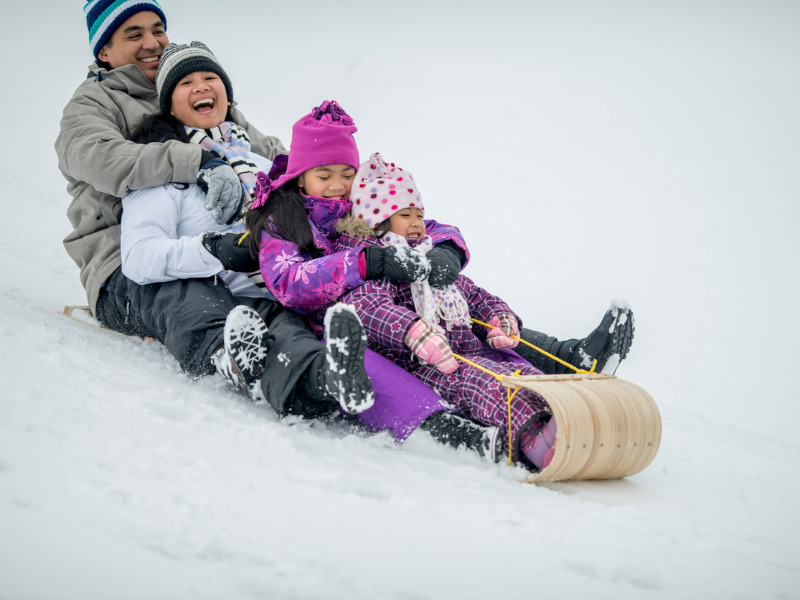Proposal to mostly ban tobogganing in Oshawa, Ont. parks draws criticism

A proposal to ban tobogganing at all but two municipal parks in a city east of Toronto is drawing criticism from lawyers who say the plan won’t boost safety and could limit access to the popular winter pastime.
But the idea also appears to be in line with restrictions enacted by other Ontario municipalities, an injury prevention expert says.
Oshawa, Ont., is weighing the tobogganing prohibition and has a report on the proposal set to go before city council at the end of this month.
Personal injury lawyers say the proposal is an example of often overstated municipal liability risks outweighing tobogganing demand.
Patrick Brown, a longtime Toronto-based injury lawyer, called the proposal “ridiculous” and a “knee-jerk reaction,” saying municipalities rarely face successful injury claims for sledding injuries.
A report slated to go before Oshawa city council on Jan. 30 says an insurance review of 10 city-owned hills known to be used for sledding found a number of issues that must be addressed to mitigate risks.
The report says it would add an extra $30,000 to the city’s annual operating budget to apply all the insurer’s recommendations, but city staff could implement them on two popular hills without additional resources.
Derek Wilson, a Hamilton-based personal injury lawyer, says Oshawa should place restrictions on only the most dangerous hills and otherwise spend money to make the others safer for widespread access to the affordable winter activity.
“Tobogganing is a Canadian pastime,” he said. “Not everybody can afford to play hockey or go skiing.”
The executive director of a national injury prevention charity says Oshawa’s proposal follows tobogganing measures enacted across Ontario.
Many municipalities limit sledding to approved hills, including Toronto, Hamilton and Ottawa, where a young girl died after a tobogganing incident in late 2021.
Pamela Fuselli, executive director of injury prevention charity Parachute, says few hills were designed for tobogganing, with municipalities often restricting those with several trees, poles or nearby roadways.
“Those are not the hills you should be using for tobogganing,” she said.
Hamilton, she noted, had a city-wide ban for years before sanctioning five sledding hills in 2017. But, she said, there’s no evidence to suggest bans have a measurable impact on tobogganing injuries, which Fuselli said are relatively low compared with injuries from some other winter activities.
Between April 2020 and March 2021, there were 80 tobogganing hospitalizations recorded in Ontario, accounting for 1.4 per cent of all reported sport and winter hospitalizations, according to data compiled by the Canadian Institute for Health Information.
Over the same period in 2016 to 2017, the activity accounted for an even smaller share of winter and sport injury hospitalization. Nineteen tobogganing hospitalizations were recorded in Ontario, amounting to 0.02 per cent of all injuries in that category.
Skiing and snowboard injuries led to 325 hospitalizations during that period, 17 times more than tobogganing.
In a news release, Oshawa says city staff will continue to review opportunities, “where feasible,” to increase sanctioned tobogganing hills in city parks.
Feature image by iStock.com/FatCamera



